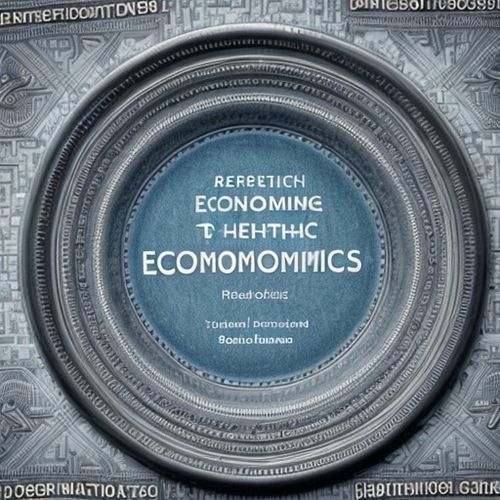The global financial landscape is shaped by two dominant accounting frameworks: International Financial Reporting Standards (IFRS) and Generally Accepted Accounting Principles (GAAP). While both aim to bring transparency and consistency to financial reporting, their philosophical and practical differences create significant implications for multinational corporations, investors, and regulators. These divergences stem from historical developments, cultural influences, and varying stakeholder priorities, making the comparison far more nuanced than a simple checklist of technical disparities.
The roots of this divide trace back to fundamental differences in approach. IFRS, developed by the International Accounting Standards Board (IASB), emphasizes principles-based standards designed to be flexible across diverse economic environments. In contrast, GAAP—primarily governing U.S. financial reporting—tends toward rules-based guidance with detailed specifications. This distinction becomes particularly evident in complex areas like revenue recognition, where IFRS provides broad principles requiring professional judgment, while GAAP offers industry-specific rules spanning hundreds of pages. The contrast reflects deeper cultural attitudes toward regulation: one favoring adaptability, the other seeking to minimize ambiguity through exhaustive detail.
Nowhere do these differences manifest more clearly than in inventory valuation. Under IFRS, the Last-In-First-Out (LIFO) method is prohibited due to concerns about potential earnings manipulation, whereas GAAP permits its use—a concession to longstanding U.S. tax policies. This single divergence can create substantial variations in reported gross margins for manufacturing firms operating across jurisdictions. Similarly, the treatment of research and development costs highlights contrasting priorities: GAAP requires immediate expensing of most R&D expenditures, while IFRS allows capitalization of development costs meeting specific criteria. These approaches reflect different views on how best to represent a company's investment in future growth.
The lease accounting reforms implemented in recent years reveal how convergence efforts still yield different outcomes. While both frameworks now require most leases to appear on balance sheets, subtle distinctions remain in lease classification and measurement. GAAP maintains a dual classification model (finance vs. operating leases) affecting expense recognition patterns, whereas IFRS uses a single model that typically results in front-loaded expenses. Such differences force multinational retailers with extensive lease portfolios to maintain parallel accounting systems, adding complexity to their consolidation processes.
Financial instruments represent another area of persistent divergence. The IFRS approach to impairment uses an expected credit loss model that anticipates future risks, while GAAP employs an incurred loss model requiring objective evidence of impairment. During economic downturns, this can lead to earlier recognition of credit losses under IFRS—a feature that proved advantageous during the 2020 pandemic crisis. Derivatives accounting reveals further nuances: while both frameworks require fair value reporting, GAAP provides more extensive hedge accounting guidance and stricter qualification criteria.
Perhaps the most philosophically significant difference lies in the frameworks' overarching objectives. IFRS prioritizes the needs of capital providers across global markets, emphasizing comparability between international competitors. GAAP, while certainly concerned with investor protection, also serves the U.S. regulatory environment's demand for precise, litigation-resistant reporting. This explains why GAAP includes specific requirements like detailed earnings per share calculations and segment reporting thresholds that have no direct IFRS equivalents. The distinction becomes particularly relevant for fast-growing technology companies that may find IFRS's flexible approach to intangible assets more accommodating than GAAP's restrictive rules.
The consolidation standards demonstrate how cultural factors influence accounting policy. IFRS tends to focus on the substance of control relationships, sometimes requiring consolidation based on de facto control even without majority ownership. GAAP, by contrast, employs more bright-line ownership tests supplemented by complex variable interest entity (VIE) rules. These differences regularly surface in joint venture accounting and special-purpose vehicle reporting, creating challenges for energy and infrastructure projects involving international partners.
As digital transformation reshapes business models, new discrepancies emerge in accounting for cloud computing arrangements and cryptocurrency holdings. IFRS generally treats software-as-a-service costs as operating expenses, while GAAP may require capitalization in certain scenarios. For cryptocurrencies—an area neither framework specifically addresses—practice has developed differently: many IFRS reporters classify digital assets as intangible assets, whereas GAAP filers often use inventory accounting. These evolving areas highlight how technological innovation tests the boundaries of existing standards.
The tax effect of these accounting differences creates real economic consequences. Temporary timing differences under GAAP's deferred tax system can differ substantially from IFRS's temporary difference approach, particularly regarding asset revaluations. The IFRS option to revalue certain fixed assets creates permanent differences that don't exist under GAAP's strict historical cost model. Multinationals must navigate these variations when forecasting cash tax liabilities across jurisdictions, adding complexity to tax planning strategies.
Looking ahead, the debate continues about whether further convergence serves global markets better than maintaining distinct systems with carefully crafted bridges. What remains undeniable is that professionals operating in international capital markets must develop fluency in both frameworks' logics—not just their technical rules but the underlying principles that shape financial storytelling across different economic cultures. As cross-border investment flows intensify, understanding these differences becomes not just an accounting exercise, but a critical component of strategic financial analysis.

By Samuel Cooper/Apr 10, 2025

By Grace Cox/Apr 10, 2025

By Emily Johnson/Apr 10, 2025

By John Smith/Apr 10, 2025

By Ryan Martin/Apr 10, 2025

By Ryan Martin/Apr 10, 2025

By Joshua Howard/Apr 10, 2025

By Eric Ward/Apr 10, 2025

By Christopher Harris/Apr 10, 2025

By Sophia Lewis/Apr 10, 2025

By George Bailey/Apr 10, 2025

By Michael Brown/Apr 10, 2025

By Joshua Howard/Apr 10, 2025

By Lily Simpson/Apr 10, 2025

By Emma Thompson/Apr 10, 2025

By William Miller/Apr 10, 2025

By Samuel Cooper/Apr 10, 2025

By George Bailey/Apr 10, 2025